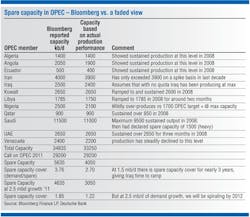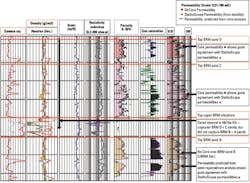A legal vacuum filling up with gas: Israel's new regulatory environment
Noy Dor
Menachem Danishefsky
Herzog Fox & Neeman law firm
With Israel's sudden emergence as a player in the international oil and gas sector, Israeli legislators and regulators are scrambling to catch up. The dramatic regulatory activity has affected almost every aspect of the industry. As a result, participants need to be aware of the main legal issues they face when entering the Israeli oil and gas sector. The prime areas likely to be of interest to rightholders, investors, and operators include the criteria for obtaining and transferring permits, licenses and leases; financing options for offshore projects in Israel, and the newly imposed, controversial levy on oil and gas profits.
A brief history
To properly understand current regulatory framework, a short history lesson may be helpful. In the hope of discovering a domestic energy source, in the 1950s the newly formed state of Israel passed a set of laws and regulations pertaining to the exploration and production of oil and gas. The licenses under the regime were allocated free of charge. At the time, exploration was directed mainly at discovering onshore oil resources. But, while Israel's neighbors uncovered a wealth of oil and gas deposits, Israel's efforts failed. Consequently, the regulations were never properly tested or developed and by the late 1990s were largely outdated.
The tide began to turn in 1999 with the first major set of offshore discoveries of natural gas. The largest at that time was the 32-bcm (1.13-tcf) Mari-B reserve. However, in 2000, the Israeli Ministry of National Infrastructure (MNI) published a decree freezing all subsequent activity offshore Israel. The freeze was intended to allow the government to consider amending the regulations and raising production royalties. It took the MNI until 2006, more than six years later, to reopen the Israeli sector of the eastern Mediterranean Sea to new exploration. In June 2007, after a trial year of offshore exploration, the government announced that "a number of drillings were made at a substantial cost, which did not lead to any new discoveries, and it was therefore decided that there isno justification to raise royalties."
Following these events, a series of seismic surveys were conducted over most of Israel's offshore. Based on the positive results of these surveys, drilling of the deepwater Tamar field began in 2008. This led the following year to a giant discovery of more than 240 bcm (8.475 tcf) of natural gas.
The primary players that emerged as rightholders in most of the offshore interests were the Delek consortium (a local Israeli holding group) and Houston-based Noble Energy. Various other smaller enterprises obtained interests offshore Israel such as Isramco, Ratio, Adira Energy, and later Modiin Energy and Hachshara Energy.
The most notable of the licenses awarded during this period was the Leviathan block to a consortium headed by Noble. In 2010, the first exploration drilling on the Leviathan block licenses revealed gas reserves estimated at around 453 bcm (16 tcf) – thought to be the world's largest natural gas discovery of the last decade.
At present, additional offshore projects are under way – most notably on Sara, Myra, and numerous smaller licenses known as the "Pelagic" group.
These recent events created enormous pressure for regulators across the board, such as the MNI, the Ministry of the Environmental Protection, and the Israel Securities Authority (ISA), to tighten their grip on oil and gas activity in Israel. Moreover, the scale of the natural gas discoveries caused many to question the Israeli governmental stake of oil and gas profits, and heated public debate ensued. It led the Ministry of Finance to appoint the so-called "Sheshinski Commission" to examine Israel's fiscal policy pertaining to oil and gas resources.
Oil and gas rights
The first regulatory challenge facing potential industry participants is meeting the MNI criteria to obtain offshore oil and gas interests. In general, under Israel's Petroleum Law—1952, any grant or transfer of these rights is subject to the approval of the Petroleum Commissioner, who must consult with the Petroleum Committee. In addition, a set of regulations promulgated in 2006 imposed the first substantive requirements of applicants for offshore oil and gas rights, both in terms of experience in oil and gas exploration and in financial strength.
The 2006 regulations required applicants or their proposed contractors to meet minimum experience thresholds in offshore drilling as follows:
• For a license in which the water depth does not exceed 100 m, experience of drilling at least one offshore well
• For a license in an area in which water depth does exceed 100 m (328 ft), experience of drilling at least one well at a depth exceeding 100 m
• In addition, under the regulations, the applicant must possess the financial capability to fund at least half of the approved project's expected cost.
The Commissioner, under somewhat unclear authority, exacerbated the situation by publishing a set of strict clarifications and guidelines for applications for oil and gas rights.
The first guidelines, published in March 2010, caused panic and uncertainty in the market by insisting on a far stricter set of criteria than those stipulated by the 2006 regulations. They imposed for the first time the need to appoint an operator with experience in managing and performing of at least one offshore project of $100 million. Furthermore with respect to financial capability, the expected cost of an offshore project was determined to be $100 million.
The Commissioner published an additional set of guidelines in January 2011 further tightening the March 2010 requirements. These imposed additional experience requirements for drilling in water depths up to 500 m (1,640 ft), up to 1,000 m (3,281 ft) and above 1,000 m respectively (as opposed to the single 100-m threshold under the 2006 regulations). The new guidelines also stipulate that the $100-million drilling experience requirement (imposed in March 2010 guidelines) apply within the last five years. Furthermore, the operator must be a partner in the oil and gas right and hold at least a 5% interest in the license. Finally, the Commissioner's latest guidelines require foreign operators to submit a questionnaire on the company's foreign trade and relations.
Of most concern, perhaps, is the issuance of draft Petroleum Regulations (Transfer of Petroleum Rights) 2011 by the MNI. These offer a much-needed effort to organize all requirements for the transfer of oil and gas rights under a single coherent framework. However, the proposal itself, which echoes many of the Commissioner's guidelines, is overly restrictive, imposing lock-up periods and restrictions on changes in indirect holdings. One glaring example is that profits from the transfer of an oil and gas license may only be used for the further development of the oil and gas resources. The market has reacted to the draft with outrage and the situation is not yet resolved.
The requirement to adhere to the most recent regulatory criteria when transferring a right, together with the ever-changing nature of such criteria, puts rightholders in a difficult position. Hypothetically, an operator that obtained a license in 2008 in accordance with the 2006 regulations to drill at 1,000 m (on the basis of prior experience drilling at 200 m, or 656 ft) would not, at present, be able to bring in an investor, since the operator's prior experience does not meet the newer criteria under the 2011 guidelines.
Financing opportunities
Much like other energy-producing countries, the Israeli marketplace offers the traditional financing options for oil and gas projects – public offerings via the Tel-Aviv Stock Exchange (TASE), and financing through banks and institutional investors.
The TASE offers the oil and gas sector a unique option, in comparison to other sectors, to list as a Limited Partnership (LP). This option is often attractive to industry participants for two central reasons. First, as initial exploration and development costs are high, the LP structure allows these costs to pass-through to the investors and serves as a deduction from any other income they have. In addition, from a corporate governance perspective, the LP framework allows the entrepreneurs that often control the General Partner to direct the activity of the LP without too much interference from the public participants, subject to few exceptions.
Some now suggest that the TASE could be an attractive option for oil and gas projects, since local inexperienced, non-professional investors appear to speculate high returns from the newly emerging offshore industry while ignoring many of the risks involved.
There are no particular regulatory restrictions on oil and gas financing in Israel; however, one of the key elements of any financing will usually be the grant of a charge over the oil and gas rights. The process of registering such a charge is far from simple while realization of the charge would also appear to be problematic. The difficulties arise from the Israeli Petroleum Law that requires the approval of the Petroleum Commissioner for both the registration and realization of a charge. The MNI has not made life easier – but rather has subjected the approval for registration of the charge to further conditions. While the MNI's intentions are to ensure that the oil and gas assets are held by known and acceptable entities, the impact of such restrictions on obtaining proper security may weaken the financing capabilities of oil and gas projects, which are vital to their future development.
The Petroleum Profits tax
Following public demand and the appointment of the Sheshinski Commission, the latter published its final recommendations in January 2011, amid strong protests from many players in the industry. But the Israeli government officially endorsed the finding of the commission and published a draft legislation adopting its recommendations. On March 30, 2011, much to the chagrin of the oil and gas rightholders, the Israeli Knesset (parliament) officially passed the Israel Tax on Petroleum Profits Law – 2011.
The newly imposed Tax on Petroleum Profits (TPP) is a progressive tax which fluctuates between 20%-50% of the profits of an oil and gas resource in a given tax year. The TPP is recognized as a deduction for ordinary income tax or corporate tax purposes, but not as a credit against such taxes.
The TPP differs from an ordinary tax in two essential respects. First, oil and gas rightholders incur the TPP with respect to the profits of each oil and gas asset independently and not with respect to their total net income. This taxation mechanism, known as "ring-fencing," implies that the taxpayer cannot offset profits from a particular oil and gas project by costs encumbered by another.
Second, the TPP rate is measured according to the cost and profitability of an oil and gas resource over the life of the resource and not the profitability in a given tax year. On the other hand, the tax base in a given tax year is still largely the profits of the resource in that year. As a result, it is conceivable that rightholders will incur the TPP liability at a very high rate on relatively minimal profits.
At present the TPP is fairly opaque and untested law, and the employees of the Israel Tax Authority have even publicly expressed reservations regarding their capacity to properly administer the new law.
Offshore Articles Archives
View Oil and Gas Articles on PennEnergy.com


